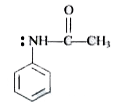Which of the following is electron deficient molecule ?
C2H6
SiH4
PH3
B2H6
The correct Answer is:D
To determine which of the following is an electron-deficient molecule, we need to analyze the bonding and electron configuration of the given molecules.
1. Understanding Electron Deficiency:
- An electron-deficient molecule is one that has fewer than eight electrons in its valence shell, making it unstable and reactive. This often occurs in molecules where central atoms are from groups that do not typically form stable octets.
2. Analyzing Diborane (B2H6):
- Diborane consists of two boron atoms and six hydrogen atoms.
- Boron is in group 13 of the periodic table and has three valence electrons. In B2H6, each boron atom forms bonds with hydrogen atoms.
- Each boron atom forms four bonds (two with hydrogen atoms and two with other boron), but it only has six electrons in total (three from each boron) to share with the hydrogen atoms.
3. Electron Configuration of Boron:
- In its ground state, boron has the electron configuration of 1s² 2s² 2p¹.
- When forming diborane, one of the 2s electrons is promoted to the 2p orbital, allowing boron to form three half-filled orbitals (2s, 2px, and 2py).
- This results in an electron-deficient situation, as boron does not achieve a full octet.
4. Conclusion:
- Since diborane (B2H6) has only six electrons shared among the boron atoms and does not complete an octet, it is classified as an electron-deficient molecule.
Final Answer:
The electron-deficient molecule among the options is Diborane (B2H6).
- An electron-deficient molecule is one that has fewer than eight electrons in its valence shell, making it unstable and reactive. This often occurs in molecules where central atoms are from groups that do not typically form stable octets.
- Diborane consists of two boron atoms and six hydrogen atoms.
- Boron is in group 13 of the periodic table and has three valence electrons. In B2H6, each boron atom forms bonds with hydrogen atoms.
- Each boron atom forms four bonds (two with hydrogen atoms and two with other boron), but it only has six electrons in total (three from each boron) to share with the hydrogen atoms.
- In its ground state, boron has the electron configuration of 1s² 2s² 2p¹.
- When forming diborane, one of the 2s electrons is promoted to the 2p orbital, allowing boron to form three half-filled orbitals (2s, 2px, and 2py).
- This results in an electron-deficient situation, as boron does not achieve a full octet.
- Since diborane (B2H6) has only six electrons shared among the boron atoms and does not complete an octet, it is classified as an electron-deficient molecule.
The electron-deficient molecule among the options is Diborane (B2H6).
Similar Questions
Knowledge Check
Which of the following hydrides is electron deficient ?
ANaHBCaH2CCH4DB2H6Which of the following compounds have electron deficiency at ortho and para positions?
A B
B C
C D
D
Which of the following is electron deficient compound :-
View SolutionWhich of the following is an electron-deficient compound?
View SolutionWhich of the following is electron deficient-hydride?
View SolutionWhich of the following is electron deficient (Lewis acid ) ?
View SolutionWhich of the following is an odd electron molecule?
View SolutionWhich one of following is not an electron deficient compound
View Solution
